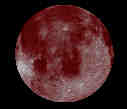 |
This eclipse starts at 0529 and ends at 1104 UT,w with the greatest extent occurring aroun 0817 UT. Australians will see only the latter part of this eclipse as the earlier portion occurs during Australian daylight. Eastern Australia and New Zealand are best placed to observe this event. For more details see Eclipses@NASA. |




